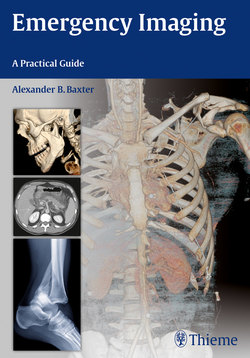Читать книгу Emergency Imaging - Alexander B. Baxter - Страница 61
На сайте Литреса книга снята с продажи.
Оглавление47
2Brain
rhages may be present but undetectable on CT. Gradient echo MRI detects these with greater sensitivity.
The dierential diagnosis of lobar hem-orrhage includes atypical hypertensive bleed, venous thrombosis with infarct, ruptured arteriovenous malformation, ruptured aneurysm, and hemorrhagic neoplasm. In younger and middle-aged patients, CT angiography, MRI with gado-linium and angiography, and conventional angiography can be considered to exclude an underlying hemorrhagic neoplasm or vascular lesion (Fig. 2.18).
◆Amyloid Angiopathy
Amyloid angiopathy is due to beta amyloid deposition in cerebral vessels and usually aects adults over age 65. It is a primary cause of cortical and subcortical (lobar) hemorrhage, and this is what brings most patients to clinical attention. Symptoms include sudden focal neurologic deficit, transient ischemic attacks, and variably progressive dementia.
Acute lobar cortical or subcortical hemorrhage against a background of sub-cortical/periventricular white matter low-attenuation changes and cerebral volume loss are typical CT findings. Microhemor-
Fig. 2.18a–da,b Lobar hemorrhage. Noncontrast CT shows peripheral, well-dened, acute right frontal lobar hemor-rhages in two elderly patients. While a hemorrhagic venous infarct could have this appearance, it would be unusual for either a hypertensive bleed or hemorrhagic conversion of an arterial-distribution infarct. Associated background low-attenuation white matter changes and sulcal prominence indicate chronic underlying small-vessel ischemic change.
c,d Amyloid angiopathy. Gradient echo MRI in a dierent patient shows multiple punctate low-signal-intensity foci involving the temporal cortices and subcortical white matter. These lesions correspond to local hemosiderin deposition from tiny subclinical hemorrhages.
